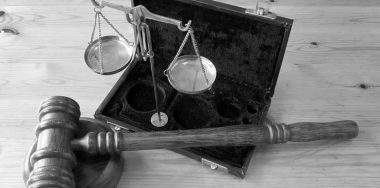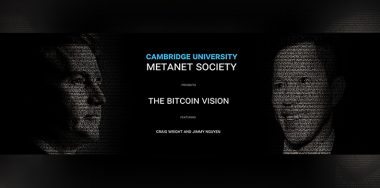Among all the chaos and headlines coming out of Kleiman v Wright, the lawsuit has also brought to public light two remarkably interesting characters, whose importance stretches far beyond the depositions and testimonies they have provided in this case. In fact, at least one of them may be the most credible witness to the invention of Bitcoin and the birth of the Satoshi Nakamoto moniker who is available to be deposed.
These people are Don Lynam, Wright’s maternal uncle, and Ronald Andrew Lynam, Wright’s grandfather on the same side.
At least as far as Lynam goes, he is an important piece of the Kleiman v Wright puzzle in that the account of his relationship with Wright is highly instructive as to Wright’s character, his upbringing and his motivations.
Lynam’s April 2 deposition is also one of the few contemporary accounts of Wright’s behavior up to and around the time Bitcoin was being invented. Lynam swore under oath that Wright was ’obsessed’ with mathematics, cryptology and internet security, and that in mid-2008 Wright gave him a rough copy of the Satoshi Nakamoto whitepaper, even telling his uncle of his intent to use the now-famous Satoshi pseudonym in its publication.
“I think the actual determination of the actual name [of the paper] was still floating at the point I got the white paper, Lynam testified, but it was clearly to be a digital monetary system…I have no doubt in my mind that that was the precursor because it had the same content as the paper that came out, or very similar content.”
He also swore that Wright had never mentioned Dave Kleiman to him, especially not in the context of what would become his Bitcoin project.
Lynam’s sworn testimony that he received an early form of the Bitcoin whitepaper in 2008—at least months before the paper was formally published in October of that year—is critical, and despite coming from a close family member, should be considered influential because of the source.
Wing Commander Don Lynam
Don Lynam is a former Royal Australian Air Force Wing Commander, and his service to the RAAF earned him a prestigious appointment to the Order of Australia for his services to the RAAF with the Logistics Branch Headquarters Support Command.
In his deposition, Lynam appears humble about his achievements, so what can be gleaned about them comes from a combination of the few details incidentally revealed as a part of that deposition, and close read between the lines.
Lynam joined the Royal Australian Air Force in January 1957 as a trainee and worked his way up to the rank of wing commander—the seventh-highest rank in the RAAF—in the engineer branch. Wing Commander is the rank equivalent of Lieutenant Colonel in the British and US Armies, as well as the U.S. Air Force and the Marine Corps. His time in the RAAF encompassed work in Australia and abroad, including providing maintenance support for aircraft squadrons in Singapore, Penang in Malaysia and Ubon in Thailand throughout the Vietnam war, and spent time States-side as an exchange officer in the United States Air Force.
The work for which he would become recognized began after returning from his tour of exchange in the United States. Lynam became the head of a group for the development of management systems, where he oversaw the creation of several important systems for use across the RAAF.
Lynam’s relationship with Dr Wright is a key feature of the sworn deposition.
“I was given the impression that he held me up as a little bit of a role model for his life; he admired me. That was very flattering, but for no particular reason that I knew, he just held me up as a little but of an image to emulate, but he’s a lot smarter than I am.”
Reading through Lynam’s deposition, Lynam does not strike one as a mere shill for Wright’s claim to the Nakamoto name. He even remarks that the early, pre-release draft of the white paper he alleges to have seen was ‘poorly written’ and in need of revision—though he admits the technical subject matter of the paper was beyond him. According to him:
“If I didn’t think that absolutely honest answers would be of assistance to Craig, I probably would have said that I don’t want to depose… I agreed to do it because I have so much faith in Craig and my knowledge of what happened through that time that I have high confidence that Craig has behaved correctly and my understanding of it is correct and I can answer all the questions with absolute honesty.”
Ronald Lynam—Wright’s grandfather
Ronald Lynam—Wright’s now deceased grandfather and the Wing Commander’s father—is also a presence in the case. He is as interesting as he is mysterious. The few times he is brought up in the various depositions of Wright and his uncle, it is to show that he was very influential on Wright and his work. In a 2019 interview, Wright called the day his grandfather died—Craig would have been 38 or 39, according to the corrected deposition—among the worst days of his life, if not the worst.
In a diagnostic assessment of Wright’s potential autism submitted before the court, the consulting experts had this to say:
“[H]is maternal grandfather was described as someone very similar in behavior and interests to Dr. Wright (‘like two peas in a pod’). He was extremely bright, isolated and immersed in his narrow interests and projects, and with whom Dr. Wright spent a great deal of time throughout his childhood, and who was one of the most important relationships in Dr. Wright’s life until his death approximately 10 years ago.”
In many ways, the slivers of information we get about Lynam Senior, though given under oath, raise more questions than they answer. According to Don Lynam:
“[Ronald Lynam] was an expert in cryptology, spoke multiple languages and he did interrogate high-value prisoners of war – that was in Australia – even though officially at the time those people never came into Australia, but they did, into an Area called Indooroopilly.”
“[H]e was on General McArthur’s staff and he reported to General McArthur’s number 2… but when McArthur went back to the Phillipines… my father went as part of that headquarters core group and he was also involved in the code breaking [in] the Coral Sea battle… and that code breaking, a lot of that was instrumental in winning [the Coral Sea battle] against the Japanese.”
“He had the connections as well with Bletchley Park in the United Kingdom, and they had the code-breaking machine that was so famous a movie has been brought about it…the Japanese codes were broken by them and so that…gave them a great advantage to win the war in the Coral Sea.”
Bletchley Park is famous as the epicenter of British codebreaking, and is the setting of the blockbuster film The Imitation Game, which depicts the work of Alan Turing and his role in the war effort during his time with British Intelligence.
Understandably, the extent of Lynam Senior’s work in military intelligence may never be known. But Don Lynam does give some illuminating anecdotes about his father, including numerous instances in which Lynam Senior was being surveilled well after his time with the military.
“In fact, he used to have surveillance, right up until [when the relevant Secrets Act restrictions expired in 1975], outside my parents’ house. There would [very often] be a car out there with two people just observing, to make sure that the wrong people were not coming in and out.”
It is a fascinating story in and of itself. Wright, one of the foremost experts in cryptography, spent much of his formative years developing his interest under the watch of Ronald Lynam, who it turns out was instrumental in the Allies’ Coral Sea victory in World War II, and was a senior figure within the international intelligence community—the legacy of which can apparently be seen in Wright today.
It also fills in some of the blanks in the Satoshi Nakamoto story. According to Wing Commander Lynam, the connection Lynam Senior had with Japan via his work with the military was very influential on Wright and his now-well-documented interest in Japanese culture and history.
That interest developed with my father talking about the Japanese and their culture, Lynam explained.
“So being Satoshi Nakamoto was a surprise but not a shock. I asked him how did he come up with that name… I understood he was telling me it was two philosophers. One was of the ilk of Adam Smith – referring to Japanese philosopher Tominaga Nakamoto.”
Reading between the lines
The Kleiman v Wright case already touches on broad and unexpected areas. But these two characters—Don Lynam and his father, Ronald Lynam—have impeccable reputations, independent of Wright and the Satoshi question. For Don Lynam, as a retired Wing Commander and Member of the Order of Australia, whether or not his nephew is the founder of Bitcoin is presumably of little consequence to him. Lying under oath about receiving a draft whitepaper before it was publicly available seems unlikely for a man with such an esteemed reputation to protect
For the late Ronald Lynam, in addition to being a prominent figure in the Allied effort in World War II, it appears he was influential on Wright. As a respected cryptographic expert, he appears to have nurtured Wright’s interest in the subject from his formative years until well into his late 30s, when Lynam sadly passed. In both Ronald and Don, one can see proof of the influences which informed the creation of the Satoshi Nakamoto pseudonym and the whitepaper he authored.
As Lynam puts it in the April 2 deposition:
“I have no doubts in my mind whatsoever that he was the sole creative author [of the Satsohi white paper]. That is not saying that other people don’t contribute to the open source software… but he’s the sole creative author… and I still have not seen anything of substance to shake me in that belief.”
New to blockchain? Check out CoinGeek’s Blockchain for Beginners section, the ultimate resource guide to learn more about blockchain technology.








